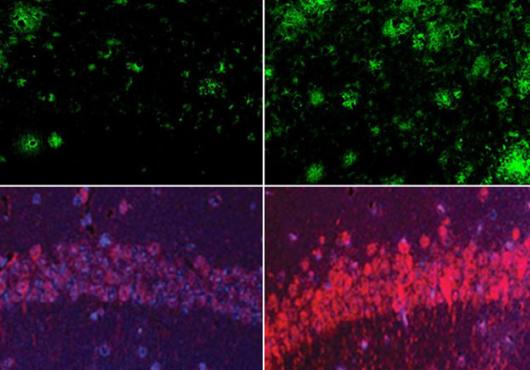
Image: iStock
A new study from researchers at Harvard Medical School and Massachusetts Eye and Ear showed that in some cases of vestibular schwannoma, a potentially lethal tumor often associated with neurofibromatosis 2 (NF2), secretions from the tumor contain toxic molecules that damage the inner ear. The findings, published online in Scientific Reports, explain why some vestibular schwannomas cause hearing loss even though they are not large enough to compress nearby structures that control hearing.
“What’s written in textbooks is that these tumors cause hearing loss by growing to the point of compressing the auditory nerve,” said senior author Konstantina Stankovic, HMS associate professor of otolaryngology and an otologic surgeon at Mass. Eye and Ear. “We knew that it couldn’t be as simple as that, because there are large tumors that do not cause hearing loss and little ones that do.”
The researchers also identified TNFa, a toxic compound that has been implicated in other forms of hearing loss, as a causative toxic molecule in the secretions from human vestibular schwannomas. When they applied those secretions directly to cochlea in a mouse model, they found that the degree of cellular damage correlated to the severity of hearing loss in humans.
Hearing loss is often the first sign of a vestibular schwannoma. Also known as “acoustic neuroma,” vestibular schwannomas grow from the Schwann cells of the vestibular (balance) nerve in the inner ear and represent the fourth most common intracranial tumor. Though vestibular schwannoma is a hallmark of NF2, a genetic disorder causing tumors to grow throughout the nervous system, the tumors most commonly occur sporadically.
Although histologically nonmalignant, vestibular schwannomas growing in size can damage nearby structures and can lead to death by compressing the brainstem. By compressing nerves in the internal auditory canal, the tumors can cause vestibular dysfunction, facial nerve paralysis and sensorineural hearing loss.
Currently, patients with symptomatic or growing vestibular schwannomas can undergo surgical resection and radiotherapy; however, both of these procedures can result in serious complications.
The findings introduce a second way in which the tumors can cause sensorineural hearing loss, by secreting toxic molecules, including TNFa. The authors are hopeful that new therapies may be developed because there are known ways to inhibit the body’s production of TNFa.
“Because these are histologically nonmalignant tumors, they do not need to be removed or irradiated as long as they are not growing. However, hearing can continue to decline even in patients with nongrowing tumors,” Stankovic said. “Our findings suggest that there may be a pharmacologic way to maintain hearing in some patients with vestibular schwannoma.”
This work was supported by Department of Defense grant W81XWH-14-1-0091, National Institute of Deafness and Other Communication Disorders grant T32DC00038, the Bertarelli Foundation, Nancy Sayles Day Foundation and Lauer Tinnitus Research Center. A full list of authors is available in the paper.
Adapted from a Mass Eye and Ear news release.


